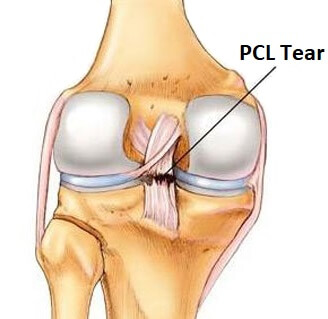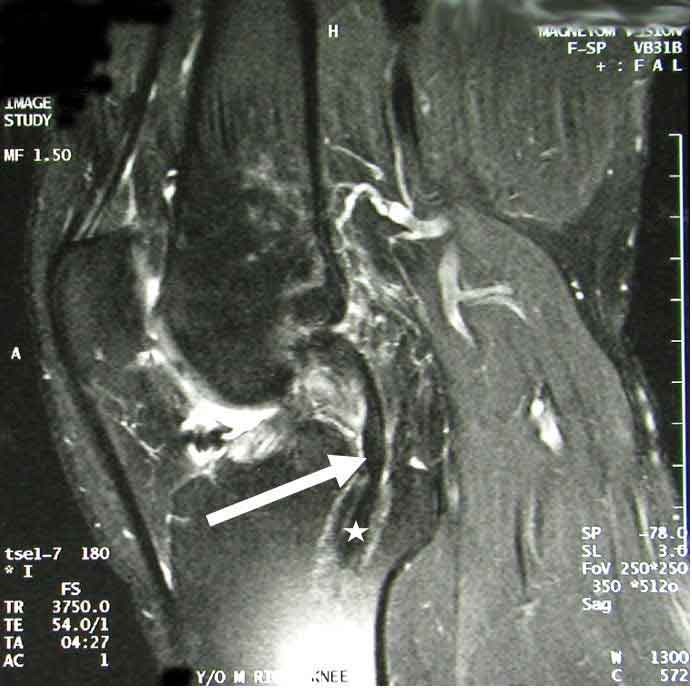PCL injuries, though relatively uncommon, can have a significant impact on knee stability and function. The posterior cruciate ligament (PCL) is a strong band of tissue located at the back of the knee joint. It plays a crucial role in preventing the shinbone from moving too far backward in relation to the thighbone. PCL injuries often result from direct trauma to the front of the shinbone, such as in car accidents or sports-related collisions. Depending on the severity of the injury, treatment options can range from conservative management to surgical intervention.
Assessment and Grading:
The severity of a PCL injury is commonly assessed using a grading system.
- Grade 1 PCL Sprain: partial PCL tear
- Grade 2 PCL Tear: near complete PCL tear
- Grade 3 PCL Tear: a complete PCL tear – the ligament is non-functional.

When to Have PCL Surgery?
Treatment of a PCL tear depends on the severity of the injury. Not all PCL tears require surgery.
Initial treatment focuses on pain control, restoring range of motion and preventing further injury. It is important to regain motion in the knee as soon as possible to aid in recovery.
The decision for operative or non-operative treatment depends on several factors including a patient’s age, activity level, symptoms and expectations. For older, sedentary patients with a relatively stable knee and little desire to return to high-level sports or fitness routines, non-operative rehabilitation and activity modification may be sufficient. For active patients of almost all ages especially young athletes reconstruction of a PCL tear is highly recommended. Stable knees are critical for safely returning to sports and preventing re-injury or additional injury. PCL reconstruction can also minimize the chance of knee arthritis or instability later in life.
In general, Dr. Fahad will perform a PCL surgery on all injuries that present themselves as a grade 3. In a higher level athlete, it may be recommended to proceed with a PCL reconstruction sooner because the results of acute reconstructions are much better than chronic reconstructions.
When Dr. Fahad does find that a patient needs PCL surgery, he thoroughly assesses the patient to see if there is a concurrent injury. Approximately 90% of patients who have a symptomatic PCL tear limiting their function also have a posterolateral corner, posteromedial injury or other associated injury. Thus, the incidence of isolated PCL reconstructions is approximately 10% of the total PCL reconstructions performed.

Post-Surgery Rehabilitation:
Recovery following PCL surgery is a gradual process. Immediately after surgery, a period of non-weight-bearing is essential to allow for proper healing of the reconstructed ligament. Over the course of several weeks, weight-bearing is gradually reintroduced, often with the assistance of crutches and a knee brace. Physical therapy plays a vital role in rehabilitation, focusing on regaining range of motion, building strength, and improving proprioception and balance. Patients may progressively transition to low-impact activities such as walking, cycling, and swimming.
Long-Term Outcome:
The ultimate goal of PCL surgery and rehabilitation is to achieve optimal knee function, stability, and pain relief. However, the timeline for full recovery can vary widely, with some individuals returning to their pre-injury activities sooner than others. Following successful recovery, patients are advised to continue with exercises and activities that maintain knee strength and stability, helping to reduce the risk of future injuries and knee-related complications.
In summary, while PCL injuries might not be as common as other knee injuries, they require careful assessment and management. The choice between surgical and non-surgical approaches should be tailored to the individual's specific circumstances, aiming to restore knee function, stability, and quality of life.
Referance: Dr. LaPrade, Bon Secours.


